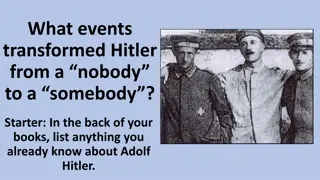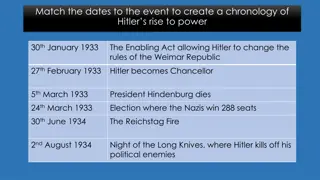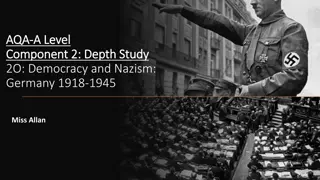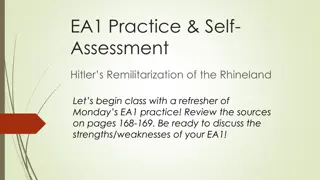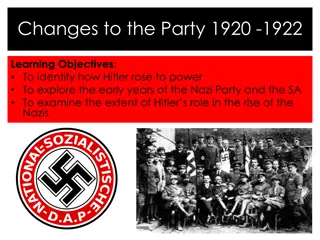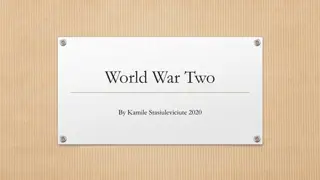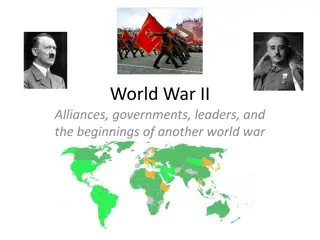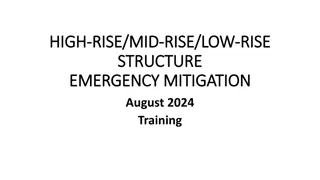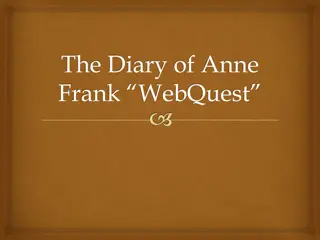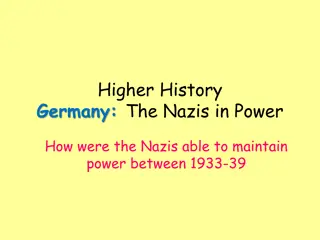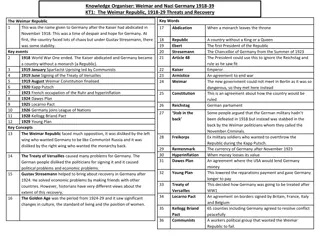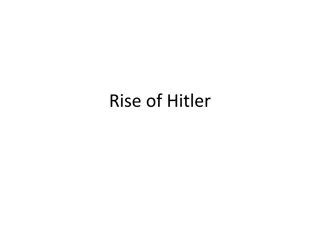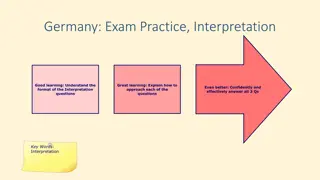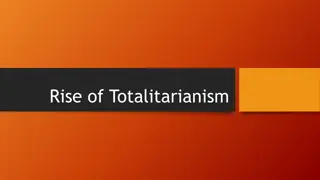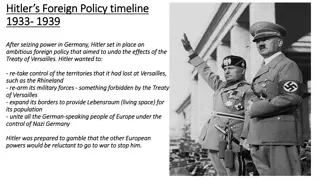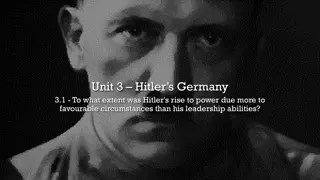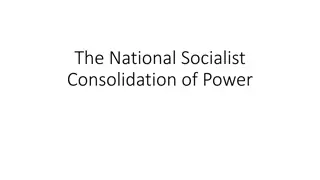
Nazism and the Rise of Hitler: Understanding the Historical Context
Explore the rise of Hitler and Nazism, delving into the ideologies, events, and consequences that shaped Nazi Germany. Understand the factors behind Hitler's ascension to power and the impact of Nazism on society. Witness the atrocities committed during this dark period of history, shedding light on the importance of remembering and learning from the past.
Download Presentation

Please find below an Image/Link to download the presentation.
The content on the website is provided AS IS for your information and personal use only. It may not be sold, licensed, or shared on other websites without obtaining consent from the author. If you encounter any issues during the download, it is possible that the publisher has removed the file from their server.
You are allowed to download the files provided on this website for personal or commercial use, subject to the condition that they are used lawfully. All files are the property of their respective owners.
The content on the website is provided AS IS for your information and personal use only. It may not be sold, licensed, or shared on other websites without obtaining consent from the author.
E N D
Presentation Transcript
StudyMafia.Org Nazism And The Rise Of Hitler Submitted To: Studymafia.org Studymafia.org Submitted By:
Table Contents Introduction About Hitler What is Nazism Rise to Power Factors influencing the rise Conclusion 2
Introduction The rise of Hitler and the politics of Nazism, the children and women in Nazi Germany, schools and concentration camps. It further highlights the facts related to Nazism and how they denied various minorities a right to live, anti-Jewish feelings, battle against democracy and socialism. People started seeing the world through Nazi eyes and spoke their Nazi language. They felt hatred and anger against Jews and genuinely believed Nazism would bring prosperity and improve general well-being. 3
About Hitler Adolf Hitler (1889-1945) was the founder and leader of the Nazi Party and the most influential voice in the organization, implementation and execution of the Holocaust, the systematic extermination and ethnic cleansing of six million European Jews and millions of other non-aryans. Hitler was the Head of State, Supreme Commander of the Armed Forces and guiding spirit, or fuhrer, of Germany's Third Reich from 1933 to 1945 4
WHAT IS NAZISM? Nazism, commonly known as National Socialism (German: National sozialismus), refers primarily to the ideology and practices of the Nazi Party under Adolf Hitler; and the policies adopted by the government of Nazi Germany The Nazis were one of several historical groups that used the term National Socialism to describe themselves, and in the 1920s they became the largest such group. Nazism is generally considered by scholars to be a form of fascism, and while it in corporated elements from both political wings, it formed most of its temporary alliances on the political right. 5
RISE TO POWER In insignificant party. They enjoyed little success in elections and were viewed as little more than thugs by the political elite. By 1933, however Hitler was the chancellor of Germany. The Nazi s had risen from obscurity to power, total power 1928 Hitler s Nazi Party were a small, 7
RISE TO POWER The Nazi Party never had an absolute majority in the Weimar government They did become the largest single party though Proportional representation allows non-majority parliaments in the form of coalitions 8
FACTORS INFLUENCING THE RISE Stresemann s death The Wall Street Crash Economic instability Failure of the Weimar Government to cope with problems. Weakness of the constitution Force used against opponents Wide ranging populist policies Visible strength at a time of weakness 10
Conclusion Nazism became a mass movement only during the Great Depression. By 1932, it had become the largest party with 37 percent votes. On 30 January 1933, Hitler achieved the highest position in the cabinet of ministries. Hitler now set out to dismantle the structures of democratic rule 11
References Google.com Wikipedia.org Studymafia.org Slidespanda.com
Thanks To StudyMafia.org

